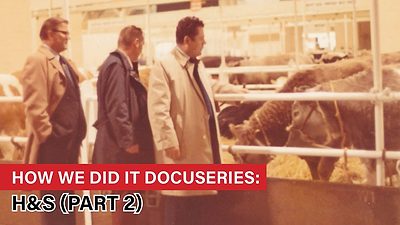The Dealership of 2030 will leverage technology to improve productivity while increasing contact with customers and prospects over broader areas and market segments. The mix of employees will change and there will be new titles and functions — some to replace current headcount, some that are completely new.
Robots & Drones – Think R2D2 and C-3PO from Star Wars. Two types of robot assistants will be integrated into the dealership.
- The R2D2 type will use data analysis and AI (Artificial Intelligence) to speed up troubleshooting, help anticipate parts and special tools needed and do other things to make repairs faster. This will include older machines — younger techs won’t have experience with older machines.
–This type will also help in parts to stock and do inventories as well as recording and transmitting information in the shop.
- The C-3PO type will help with the repetitive, dangerous or heavy activities. For changing tires, adding duals, replacing row components or helping with setup of big machines, employees will have a robot to help.
Drones will pickup and delivery parts both generated by the dealership and to and from delivery services.
Simulators.
Dynamic virtual visualization of machines and their operation will expand both in the dealership and remotely, and in all departments.
- Wholegoods sales will use simulators for virtual demonstrations as part of the sales process.
– This could help used buyers located states away to get a sense of a machine they are not used to and to compare.
– A sales rep or trainer could have the simulator on a trailer and drive to a customer’s location for seasonal refresher training for specialized machines.
– Service techs and parts people can visualize a machine and repair sequence to help anticipate and troubleshoot. Schematics are used now to do this — a simulator would be dynamic and show the process and components to remove.
Data Integration & AI.
Precision farming and telematics will generate orders of magnitude more data that must be managed. The predicative analytics to make these data usable is moving from the Amazons and Googles to parts ordering, service and agronomic solutions. The weather, seasonality and short time windows make good predictions highly valuable. A large number of ag technology startups will have generated needs to integrate those products on the farm and with farm machines.
Dealerships will have a role in managing data — some to leverage it as a service and some as a requirement to be in business.
Changes in Employee Mix.
Those with repetitive, dangerous and heavy tasks will reduce in numbers — titles like clerks, warranty administrators, setup and delivery. New positions will include:
- Data Wranglers – to ensure good data flow and analysis among dealership locations, customers and their machines, other suppliers and vendors
- Robot Repair – to maintain and repair robots and drones
- Third Party Relations – to ensure that, when supplied through or with other businesses, the sales, support and productivity of your customers is maintained to your standards.
Dealership Facilities.
The need to service customers over wide areas will reduce the number of locations as consolidation continues in production ag, and the facilities will be primarily for product support. Used equipment display and specialized machine support will be centralized.
How Will Ag Do Business in 2030?
Defining Dealer-Customer Relationships of the Future with Dollars & Sense
Dare to Dream: How Might Dealer Facilities Evolve by 2030
How to Innovate Your Dealership Through a Changing Market
Young Growers Expect High Levels of Customer Service from Dealers







Post a comment
Report Abusive Comment